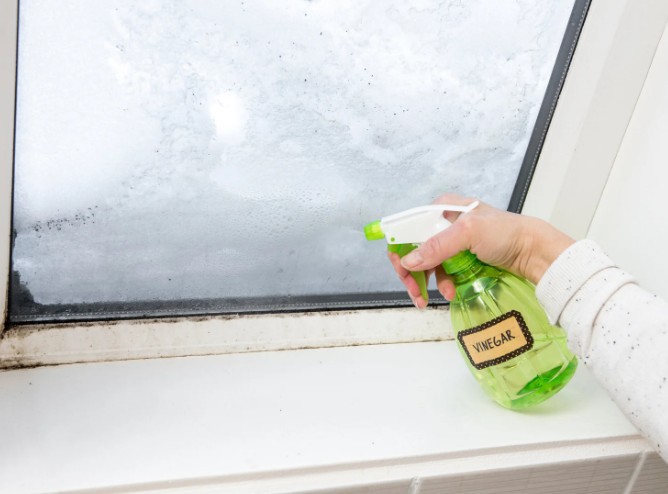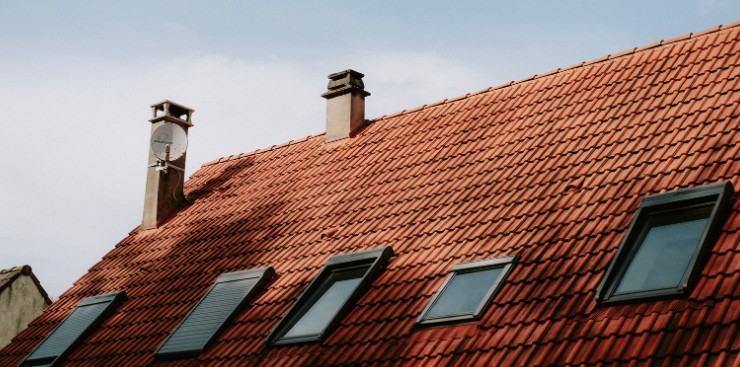- Understanding Condensation on Windows
- Why Condensation Forms on Windows?
- What are the Different Types of Condensation on Windows?
- How to Stop Condensation on Windows Overnight? - Quick Fixes for Immediate Results
- How to Prevent Condensation on Windows?
- How to Stop Condensation on Double Glazed Windows in Winter?
- How to Get Rid of Condensation in Between Double Glazed Windows?
- How to Dry Out a Blown Window?
- How to Fix Condensation in Double Glazing?
- Natural Remedies – Does Vinegar Stop Condensation on Windows?
- How to Stop Condensation on Windows Overnight? - Seasonal Condensation Control
- Special Cases – Skylight and Roof Windows
- Final Thoughts – Clear Windows All Year Round
- FAQ – Common Questions About How to Stop Condensation on Windows
Understanding Condensation on Windows
Condensation is what I’ve had to meet with in nearly every UK home I’ve lived in. It appears as small water droplets on glass, often in the mornings or during cold weather.
Scientifically, it happens when warm, moist air inside meets a colder window surface, causing water vapour to turn into liquid.
In the UK’s damp, cool climate, condensation on windows is extremely common, especially in winter. While a little moisture might seem harmless, over time it can lead to black mould, wood rot, and damage to window seals.
Learning how to stop condensation on windows isn’t just about aesthetics — it’s about protecting your health and home.
Why Condensation Forms on Windows?
1. Indoor humidity
A usual day activities such as cooking, showering, and drying clothes indoors release water vapour. Without enough ventilation, this moisture lingers and at the same time it condenses on surfaces that are colder.
2. Poor ventilation
Modern homes are often sealed tightly to improve energy efficiency. Unfortunately, this traps moisture inside.
3. Temperature differences
When indoor air is warm but your windows are cold (especially single glazing or poorly insulated double glazing), condensation is more likely to form.
4. Damaged window seals
If your double glazing has failed, moisture can form between the panes, leading to misty glass that can’t be wiped away.

What are the Different Types of Condensation on Windows?
Condensation inside windows
Appears on the room-facing surface of the glass. This is caused by high indoor humidity and low ventilation.
Condensation on the outside of windows
Occurs when the outer pane is cooler than the morning air. Usually harmless and tells you that your double glazing is insulating fine.
Condensation between double glazed windows
This is a sign of a blown window — the seal has failed, letting moisture inside the sealed unit.
How to Stop Condensation on Windows Overnight? – Quick Fixes for Immediate Results
When I’ve woken up to water-covered bedroom windows, I’ve relied on a few simple tricks:
- Hairdryer method – For emergency use on small areas and to remove moisture from between window panes, it can help dry moisture, but it’s temporary.
- Window vacuum – Quickly removes pooled water before it causes mould or frame damage.
- Daily wipe-down – A microfibre cloth absorbs water without smearing.
These methods give instant results, but they don’t solve the underlying humidity problem.

How to Prevent Condensation on Windows?
To keep condensation from returning, I’ve learned to focus on reducing humidity and improving airflow:
- Install trickle vents – These small vents on window frames allow fresh air to circulate without big heat loss.
- Improve extractor fan performance – Upgrade bathroom and kitchen fans to more powerful, humidity-sensitive models.
- Maintain steady indoor temperatures – Avoid sudden drops in heating which make windows cold enough for moisture to settle.
How to Stop Condensation on Double Glazed Windows in Winter?
Even good double glazing can mist up in winter because the inner pane still cools enough to trigger condensation when humidity is high.
Keeping the heating steady, ventilating rooms briefly each day, and using a dehumidifier can help. Make sure curtains or blinds aren’t blocking airflow around the window, as this can trap moist air against the glass.
How to Get Rid of Condensation in Between Double Glazed Windows?
If you have misting inside the window space, the original airtight seal has failed and lost its job. No amount of surface cleaning will work here.
You have two main options:
- Dry out a blown window using micro-drilled holes along with the silica gel (temporary)
- Replace the sealed unit (permanent)
How to Dry Out a Blown Window?
I’ve tried this on an old kitchen window to buy time before replacement:
- Drill a small hole in the spacer bar or edge of the glass unit.
- Use a dehumidifier positioned right next to the hole to draw moisture out.
- Insert silica gel beads to absorb any remaining water.
- Seal the hole with weatherproof sealant.
It worked for around 18 months before misting returned.

How to Fix Condensation in Double Glazing?
Can condensation in double glazing be fixed?
Yes — but usually only temporarily. Once the seal has failed, it can’t be restored to factory condition.
DIY methods On How to Fix Condensation in Double Glazing?
Micro-drilling and drying, replacing seals, or adding moisture-absorbing materials.
When to reseal windows – How to Reseal Windows?
If the gap is small and accessible, resealing can slow moisture ingress.
When replacement is the only option?
If misting returns quickly after a fix, replacing the glass unit is the only long-term answer.
Natural Remedies – Does Vinegar Stop Condensation on Windows?
How vinegar helps reduce surface condensation?
Vinegar modifies the surface tension of glass, making it harder for water droplets to cling.
Limitations – it won’t fix blown seals
This method only helps with surface condensation and has no effect on trapped moisture inside double glazing.

How to Stop Condensation on Windows Overnight? – Seasonal Condensation Control
Why cold weather increases condensation risk?
Low outdoor temperatures make the inner glass pane cold, so moisture condenses more readily.
Bedroom-specific solutions:
Keep trickle vents open, use a small gap in the window, and avoid drying laundry in the bedroom.
Night ventilation tips without losing heat
Use latest window night locks or short morning airing sessions.
Special Cases – Skylight and Roof Windows
Why skylight windows get condensation easily? – Clean Skylight Windows From Inside
Warm, moist air rises to the roof space, where it meets cold skylight glass. Regular cleaning keeps surfaces free of dust and grime that hold moisture.
Tips for prevention in hard-to-reach glass
Ensure loft ventilation is adequate and surrounding insulation is intact to keep the glass warmer.

Final Thoughts – Clear Windows All Year Round
Dealing with condensation on windows means first identifying its type and cause.
Quick fixes like wiping down or using a hairdryer are fine for emergencies, but long-term prevention requires ventilation, humidity control, and sometimes professional repair.
From how to stop condensation on windows overnight to how to dry out a blown window, the methods here will help you protect your windows and your home from the damaging effects of moisture.
FAQ – Common Questions About How to Stop Condensation on Windows
1. How long does it take to get rid of condensation?
Surface moisture can be wiped away instantly, but full prevention takes ongoing effort.
2. Is vinegar safe for all window types?
Yes, it is safe to use vinegar for glass, but keep it away from wooden frames.
3. Will new double glazing stop condensation completely?
It reduces it greatly, but surface condensation can still occur with high indoor humidity.
4. Should I use a hairdryer every day?
No — it’s fine in emergencies but prolonged use can damage seals.


0 Comments